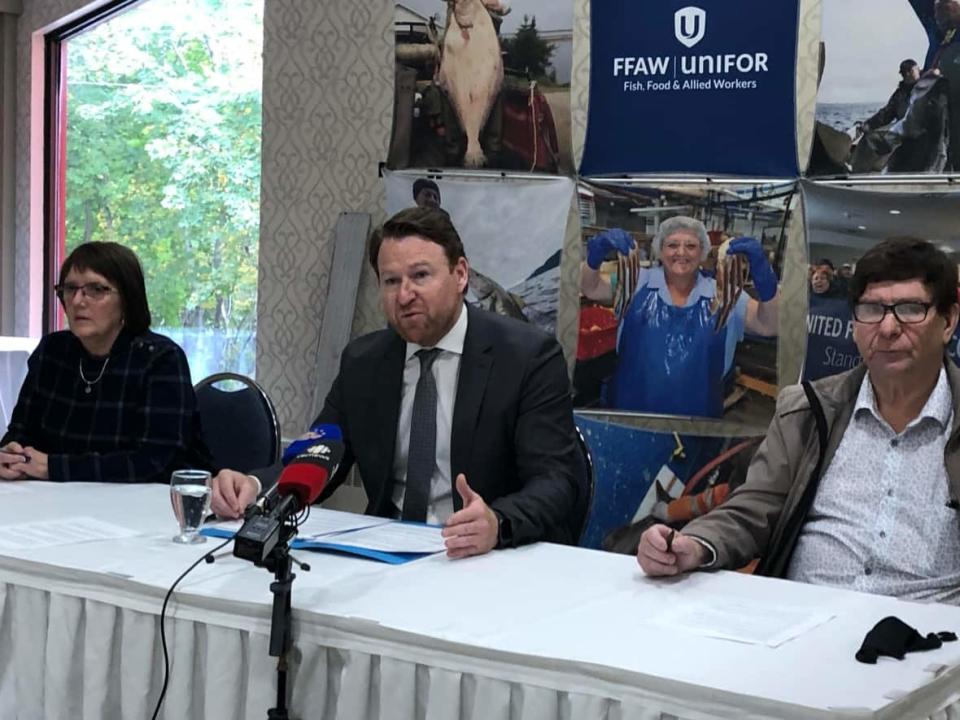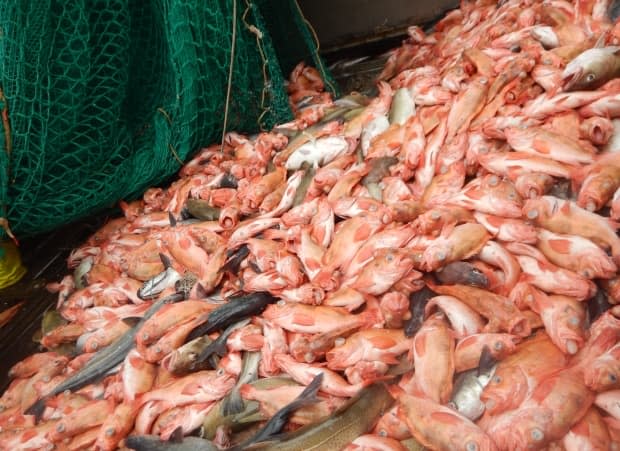The redfish fishery is returning. So is angst about quotas

A coalition led by the union representing workers in Newfoundland and Labrador's fishing industry is sounding the alarm about plans for an emerging commercial redfish fishery, saying there are big concerns about potential quotas for inshore harvesters.
The Department of Fisheries and Oceans is in the midst of consultations to decide on quota allocations for redfish in what's called Unit 1, a swath of water that spans from western Newfoundland to the mouth of the Gulf of St. Lawrence.
That process is favouring the offshore sector, according to the president of the Fish, Food and Allied Workers union, and forgetting the inshore harvesters when it comes to redfish.
"The fishery will be the economic driver of economic sustainability in areas that are badly impacted by a decline in northern shrimp. This will only happen if inshore harvesters and Indigenous groups in our province are given a significant quota when this redfish fishery opens," said Keith Sullivan at a press conference in Corner Brook.
Sullivan and the FFAW spoke out Thursday on behalf of a coalition that includes inshore harvester associations, Indigenous groups and seafood processors in Atlantic Canada.
Redfish was commercially fished in the past. It has been under a moratorium in Unit 1 since 1995, but according to DFO stocks have been rebounding with anticipated growth in the future.
When redfish was commercially fished in the area, the inshore sector was allocated 15 per cent of the catch, said the FFAW with the vast majority given to offshore companies.

'It is getting tougher all the time'
The FFAW said about 4.3 million metric tonnes of redfish are in the Gulf of St. Lawrence. A slow-growing and long-lived species, the fish need to be 22 centimetres for commercial harvest, which the FFAW said could take two to three more years.
The FFAW believes the return of redfish could provide jobs for generations, selling to Europe, Asia, and the United States.
Ren Genge of Anchor Point, on Newfoundland's Northern Peninsula, used to fish redfish prior to its moratorium, and then switched to shrimp. Genge, a member of the FFAW, wants the federal government to give inshore harvesters the biggest quota of redfish when the commercial fishery opens.
"With the decline in shrimp quotas and the decline in prices, it is getting tougher all the time for us," said Genge at Thursday's press conference.
"If we don't get a fair share of this redfish, we're gone."
The DFO consultation process is ongoing, but Sullivan said with only a five-point questionnaire and no public meetings, it's not much of a consultation.
"I fear there is no one really looking at what the future of this fishery looks like and don't really care who benefits," Sullivan said.
"And this is why we need support from our communities. We need support from our [members of Parliament] and ultimately a changed process to make sure we get things right."
In a statement to CBC News, DFO said the consultation process in question will include virtual meetings in November.
"We are committed to taking the time necessary to collect all views before moving ahead with a commercial fishery in Unit 1 Redfish," read the statement.
Formal consultations with stakeholders launched in mid-September, the statement said. To give all parties time to respond, DFO said it extended the deadline for submissions to Nov. 15.

 Yahoo Movies
Yahoo Movies 